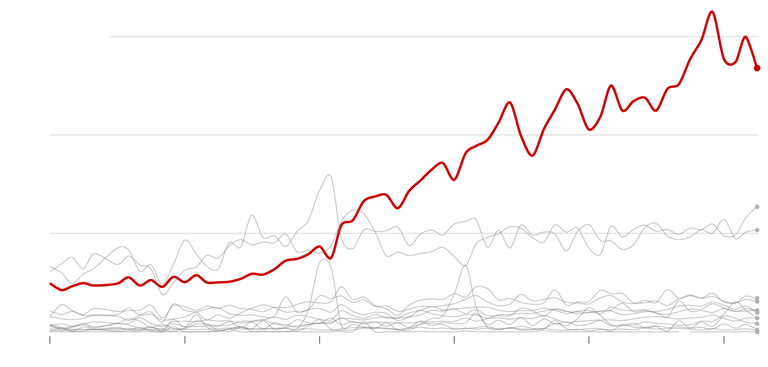Subway delays have become a frustrating fact of life in New York City. Every day brings a new set of alerts about painful disruptions across the system. Trains creep along or stop in the tunnels. Crowds thicken on the platforms.
Is the main culprit behind delays the aging equipment in the 112-year-old system — signals and tracks taxed beyond their limits and patched together to eke out a few more creaky years, only to break down again and again?
That is certainly an enormous problem, but it is not the No. 1 reason.
The major cause of subway delays is a factor that basically did not exist 15 years ago: overcrowding. The subway is a victim of its own success and the city's resurgence. Large crowds slow down trains, which creates more crowding in a vicious circle that takes hours to unwind during every rush.
Causes of subway delays

Subway ridership has risen dramatically since the 1990s, when about four million people used the system each day. Now it is nearly six million riders each day — the highest level since the 1940s. Those extra riders are cramming onto a system that is essentially the same size it has been for decades.
Starting in 2011, the growth in ridership became steeper, and in 2013, it reached a tipping point with the system no longer able to easily absorb the extra riders. “In early 2014 and 2015, it was more than saturated, and there was this cumulative effect against on-time performance,” said Wynton Habersham, head of the subways department at the Metropolitan Transportation Authority. Running trains on time – once the reliable norm – has dropped across the system, and only a handful of lines now have on-time rates above 70 percent.
But how exactly does overcrowding cause delays? Subway officials say trains slow down as they face an onslaught of passengers at each station. “Dwell time” – the period a train spends in the station loading and unloading – balloons.
After a train starts to pick up large crowds, it becomes harder for people to get on and off, said Brussard Alston, a train operator for nearly two decades. The delay reverberates down the line as a queue of trains behind it backs up.
“Once the damage is done, it takes a while for it to dissipate,” Mr. Alston said.
A train is considered late if it reaches the final station on the line more than five minutes after its scheduled arrival time. (Any train that skips a stop, sometimes if it is too crowded, is automatically tallied as late since it did not run the entire route.)
Overcrowding now accounts for more than one-third of the nearly 75,000 subway delays across the system each month.
Crowding Delays at Grand Central During Rush Hour
The problem is particularly acute in the heart of Manhattan, where trains often slow to a crawl. It is here where the “dwell time” has been growing. The system is designed for trains to spend just 30 seconds in a station before leaving. At the busy Grand Central stop on the Lexington Avenue line, a Times journalist recorded wait times that routinely exceeded that target.
While the overcrowding crisis has unfolded slowly over years, the authority has not moved aggressively enough to accommodate the surge of riders or to address delays, transit experts say.
“The only truly effective way to address crowding on the subway is to run more trains,” said John Raskin, the executive director of the Riders Alliance, an advocacy group. “It’s not a cheap or quick solution.”
The number of delays during the daily commute now leaves thousands of people waiting on platforms because the backups prevent more trains from running during peak periods.
“They’ll squeeze and squeeze in, and people get angry,” Mr. Alston said. “Patience is very thin for the people who ride the trains. I see arguments almost every day.”
Hi! I am a robot. I just upvoted you! I found similar content that readers might be interested in:
https://www.nytimes.com/interactive/2017/06/28/nyregion/subway-delays-overcrowding.html